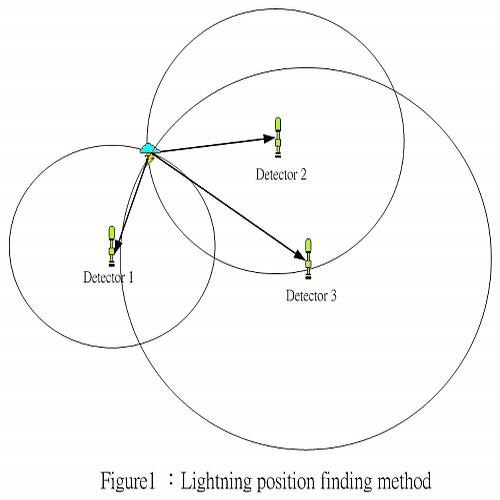How to determine the lightning location?
In 1970s and 80s, electronic technology advanced rapidly. At that time, scientists were already capable of using electronic technology to detect the location of lightning discharge from cloud to ground. There were essentially two common detection methods. The first method was called direction finding technology, whereas the second one was called time-of-arrival technology. With the implementation and wide applications of the global positioning satellite system and high speed microprocessors in late 1990s, new lightning location information systems were developed making use of the above two methods together, thereby greatly enhancing the detection efficiency and accuracy.
As mentioned in the previous chapter, when a lightning detector receives electromagnetic flux from lightning, it will automatically compute the direction and arrival time of the electromagnetic flux. Such information including the amplitude and polarity of the signals as well as the station code will be transmitted to the central computer for further calculation. At the database of the central computer, the precise geographical positions of all stations are already stored for detailed analysis. To trigger the analysis of lightning location, the minimum requirement is that there are at least valid data from two different stations received by the central computer within a few seconds. Hence, the more data from different stations the central computer receives, the more accurate the location and time of occurrence of lightning can be determined.
Stations closer to the location of lightning will receive the electromagnetic flux from the lightning earlier. The central computer will compute the location and time of occurrence of lightning according to the direction and time of reception of the signals detected at different stations. The computation process employs an iterative algorithm for calculating the precise location of the lightning. The computation is principally based on trigonometry (please see Figure 1). The distance of the lightning from each station is estimated from the time difference of reception of the electromagnetic flux at different stations. After that, we can then draw a circle for each station with the estimated distance as the radius. When all circles intersect closely at a point and the direction of that point from each station is consistent with the direction of the electromagnetic flux received at the station, the location of the lightning is then determined.
